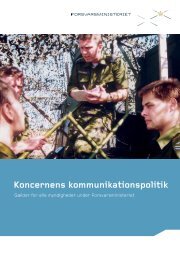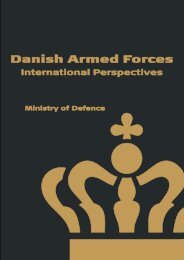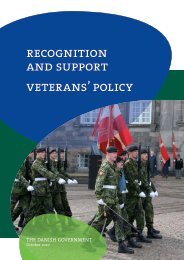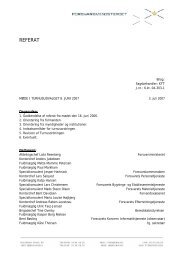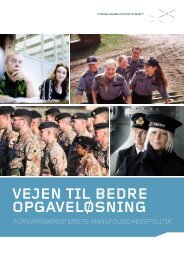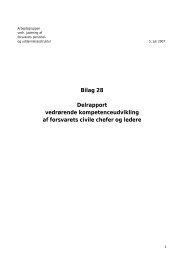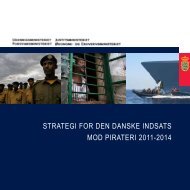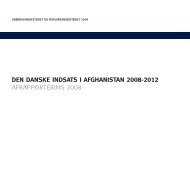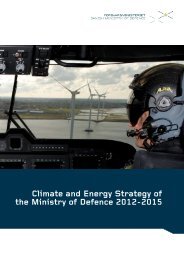Afghanistan Report 2009 - Isaf - Nato
Afghanistan Report 2009 - Isaf - Nato
Afghanistan Report 2009 - Isaf - Nato
Create successful ePaper yourself
Turn your PDF publications into a flip-book with our unique Google optimized e-Paper software.
ANP officers and Canadian soldiers<br />
from the Kandahar Provincial<br />
Reconstruction Team (KPRT) on<br />
a foot patrol in Kandahar city.<br />
(© Canadian MoD)<br />
Given this background, the Afghan Government has<br />
taken a number of measures in 2008 aimed at boosting<br />
its own and the International Community’s efforts to tackle<br />
these shortcomings. The launch of the Afghan National<br />
Development Strategy (ANDS) in June 2008 and the<br />
subsequent Ministry of Interior police reform are two<br />
important steps in establishing robust and capable police<br />
forces. In addition to raising the ANP ceiling to 82,180,<br />
several high-level priorities have been identified:<br />
• To accelerate and expand existing training<br />
programmes;<br />
• To re-align ANP salaries and benefits with<br />
ANA levels as a means to fight corruption and<br />
desertion;<br />
• To strengthen ANP full integration into local<br />
institutions;<br />
• To reinforce ANP and ANA cooperation and<br />
complementarity.<br />
Action has since been taken by the Afghan Government<br />
to raise ANP salaries and benefits and strengthen<br />
the ANP presence at the district level, through the<br />
Afghan Social Outreach (ASOP) and Afghan Public<br />
Protection Force (APPF) programmes.<br />
The International Police Coordination Board (IPCB 5 )<br />
reflects the Afghan Government’s policing priorities.<br />
The European Union Police mission (EUPOL) and<br />
CSTC-A are the principal partners supporting ANP<br />
capacity-building. While the former focuses on assisting<br />
the Interior Ministry with the development of effective<br />
law and order institutions and policies, the latter<br />
concentrates on more tactical issues, including police<br />
support, training and equipping. CSTC-A’s Focused<br />
District Development (FDD) strategy has achieved<br />
significant successes through a systematic retraining<br />
programme for all police officers in selected districts.<br />
Assisting the ANP is one of ISAF’s key supporting<br />
tasks. This mainly consists of the provision of niche<br />
training of non-police specific skills (such as counter-<br />
IED training), mentoring, and joint patrolling. Much of<br />
this assistance is provided through the regional security<br />
committees and the regional operations coordination<br />
centres. These are manned jointly by the ANA,<br />
the ANP and ISAF. ISAF ensures that the CSTC-A<br />
Police Mentoring Teams (PMTs) at district level are<br />
integrated into regional command arrangements.<br />
Today, the ANP stands at 76,000 forces out of a total<br />
authorised strength of 82,180.<br />
5<br />
IPCB’s members include EUPOL, UNAMA, NATO, LOTFA and<br />
CSTC-A.<br />
16



